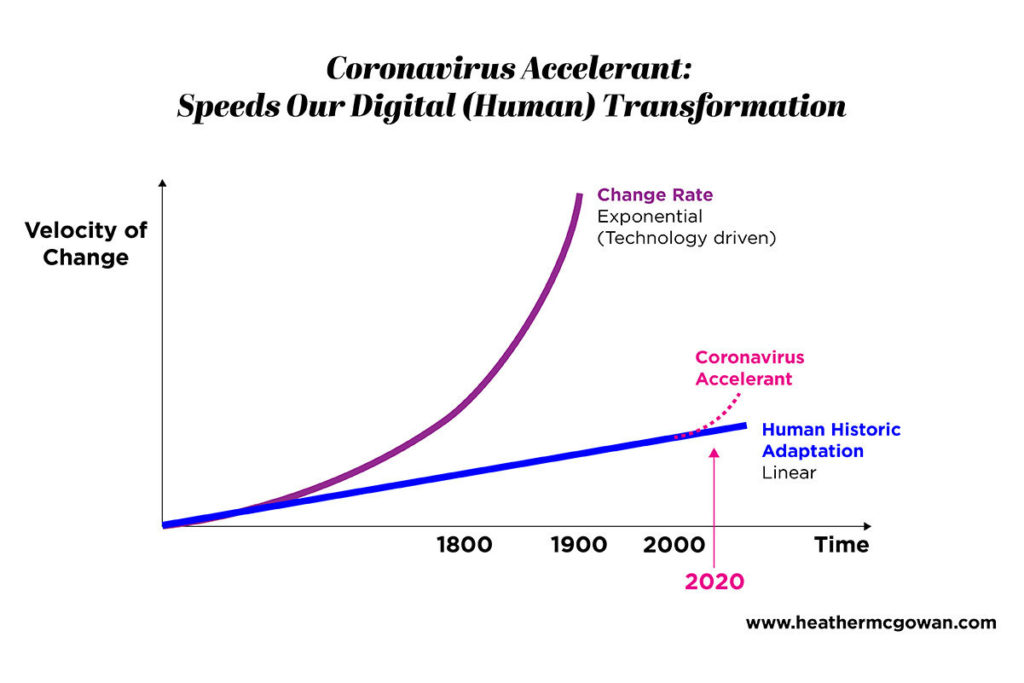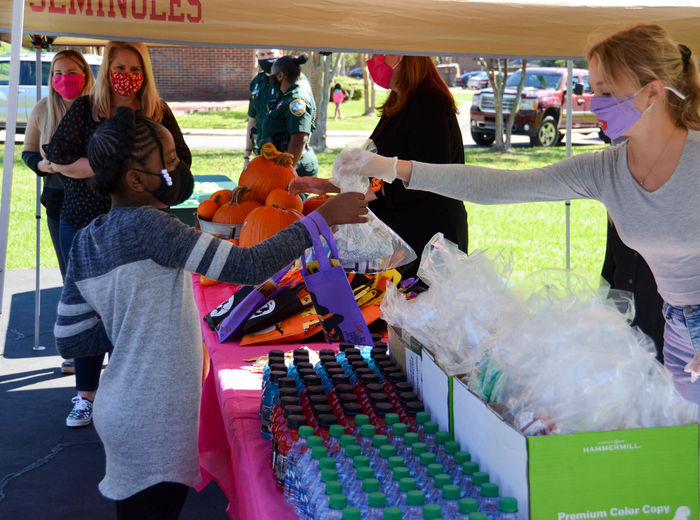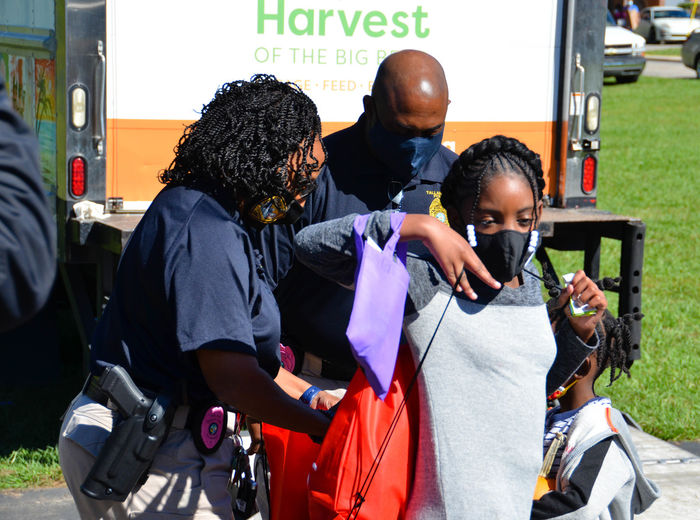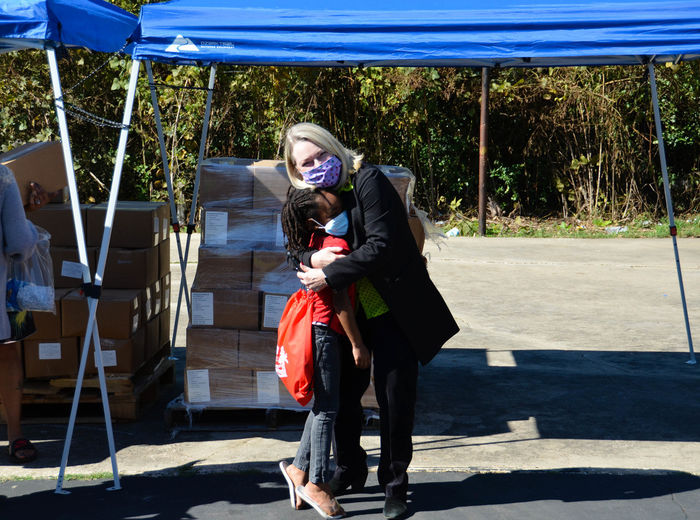Blog
Blog

5 Ways to Reinvent Your Business Post-COVID
Maximize these transformative moments and reap the rewards.
As we entered the COVID-19 pandemic in 2020, we all experienced moments of cognition that things would never be the same — not in our personal lives or our professional. As parents and citizens, we could sense the way we shopped, dined, studied, worshipped and played would be altered; the only question was how, and by how much. As professionals and work leaders, that impact was magnified as we sought to shore up business in a rapidly changing landscape, pivot to meet dynamic market needs and help our employees adapt to new protocols.
Now, as we emerge from the pandemic, we face a new fundamental question: How can we leverage the changes the pandemic brought and make them work for our benefit? The pandemic expedited shifts that were already brewing, concepts like flexible work arrangements and an emphasis on digital-first. Returning to the way we did business in 2019 would be a step backward — impossible, and even if not, imprudent. Now, the new normal of 2021 and beyond is being written, and we are the authors. As we make key decisions about what we want in our new workplace, corporate culture and ways of engaging with external audiences, “reinvention” will be the key word.
Because the pandemic happened, new business trends are emerging, and smart businesses are embracing them. Here are five opportunistic trends we think you should devote real energy to considering.
Redefine where and when employees work
This is the hot topic right now. After more than a year of staggering shifts, sending employees home to work remotely and other flexible solutions, businesses are reimagining what the workplace should look like. While some will choose to mandate a return to the office and some will make remote work permanent, I believe an office-emphasized hybrid solution is ideal: employees working at a place of their choosing and in the office with some frequency.
Employers get the best of both worlds: They keep the team engagement and workplace culture, and employees maintain some of the flexibility they have grown to love. As Francesco Starace, CEO of the Enel Group, said recently, “The responsibility that was shown by all colleagues and workers during the pandemic…they earned, in a way, the right to decide where they want to work and how.” Yes to where and how, and also yes to when.
We talk a lot now about flexibility policies. I would argue we need flexibility policies that flex. Not just allow people to work from home, but also being flexible about when people work. Workers have earned the right to do work differently.
Kristin Peck, CEO of Zoetis
Meeting employees’ new needs is not a misplaced focus. Talent shortages have often been a top news story, as the pandemic has given workers the opportunity to consider whether the work they had been doing is what they want to continue to do. And with more employers offering remote work nationally, these workers have exponential options to explore. That makes the hybrid workplace both a retention tool and recruitment perk.
We see workplace flexibility as a tool to unlock your team’s potential.
Empower and engage employees
Employee engagement and trust is at an all-time high. Last year’s Edelman Trust Barometer survey found that 76 percent of respondents trust their employer, the highest of any survey category (by comparison, 49 percent said they trust the media or government). When asked about a prospective job, 73 percent said that “employees included in the planning” would be an important factor in whether to accept.
For employers that want engaged, empowered team members who aren’t afraid to give substantive feedback, this is a beautiful time to be a leader. Truly empowered employees have valuable information to offer—lessons learned, market intelligence, customer observations, technical data, operational improvements, safety warnings, risk identifications and more. Employees need to know that communicating with leadership is safe and valued by the company, and that starts with listening. It ends with applying the lessons learned.
Press harder on digital
Putting “digital first” is not new, but the pandemic accelerated and amplified our reliance on technology. And, when gathering in person was unsafe, that technology was a blessing, allowing us to stay connected and see each other’s faces. Everything from concerts to classrooms went online, deepening our engagement with devices, along with our want for immediate satisfaction: If Amazon can deliver purchases on the next day, why can’t everyone else? If a pizza can be here in 40 minutes, what about takeout from our favorite restaurant?
Companies responded by working even harder to meet customers online. A McKinsey survey published in October 2020 found that companies were three times more likely than they were before the crisis to conduct at least 80 percent of their customer interactions digitally.

To build on that momentum and continue with the theme of reinvention, how can your business better use technology to deliver your products and services or reach your digital audience? Consider the adaptation at some larger medical practices, where, while you’re awaiting lab work, you can see your place in line on a screen. Even small adjustments toward digital can have a big impact on the customer experience; the key is to have the adaptation feel like an enhancement rather than a reduction in service or, worse, source of frustration.
Consider a cause
Consumers continue to have elevated expectations that companies will do the right thing. Demonstrating that you are embracing a corporate cause strengthens your brand internally as well. The unrest witnessed in 2020 prompted cultural conversations, largely about equity and access. How can your brand engage in these conversations in an authentic, impactful way? Here’s our example: Through our corporate community outreach program, Moore Impact, our entire company occasionally shuts down to serve in our local markets. In 2020, we made a commitment to fight childhood hunger, donating 20,000 meals to food insecure families across the United States and in Florida’s poorest zip code just miles from our headquarters.
From child well-being, hunger and homelessness or environmental, there are issues for every passion. For example, if you’re considering an environmental cause, look at innovative approaches like this one from the Colorado-based New Belgium brewing company. While brewing beer has environmental downsides, they counter them by being the first brewery to join Ceres’ Business for Innovative Climate & Energy Policy coalition (and buying bicycles to help employees get around their 50-acre site), leading to Certified B Corporation status. IKEA recently pledged an additional $1.4 billion to sustainability efforts, but they also made a move customers would be sure to notice: introducing vegan versions of their famous meatballs to stores nationwide. McKinsey & Company notes that nations including the United States are using economic recovery plans to push through environmental policy priorities, and opportunities may land in the laps of companies that prove themselves to be caring and competent.
Providing in an immediate-demand economy
Customers have higher expectations: They want it now and they want it customized, and companies that can deliver are rewarded. Companies that reinvented their services and products due to COVID are pondering how they can institutionalize and further build on that innovation.
Ford is one company that has shown a continued ability to meet market-driven demand. During COVID, Ford shifted its services and assembly line to produce PPE and ventilators as part of “Project Apollo,” named for the scrappy Apollo 13 crew and astronauts who reconfigured what they had onboard to save themselves. That was a short-term (though high-impact) response, but Ford has been taking long-term steps to improve environmental sustainability for decades. Last month, they released the first all-electric F150, on the heels of last year’s launch of the Mach-E, the first electric Mustang, as part of a stated goal to achieve carbon neutrality globally by 2050. The market is likely to reward such innovation.
To sum all of this up, COVID necessitated innovation in almost every aspect of business, from what we produce to where we do the work in the first place. Primed for change and armed with technology, we are in a strong position to listen to our employees and customers, enabling us to develop new products and services more quickly and cost-effectively. Our enemy now may be fatigue: The past 15 months have been hard, and we’re ready to get back to normal. But normal is being redefined. And if we don’t pause to have hard conversations and do some introspection on what that new normal is, we minimize the potential impact of some of the most transformative moments for our companies’ growth and acceleration.














